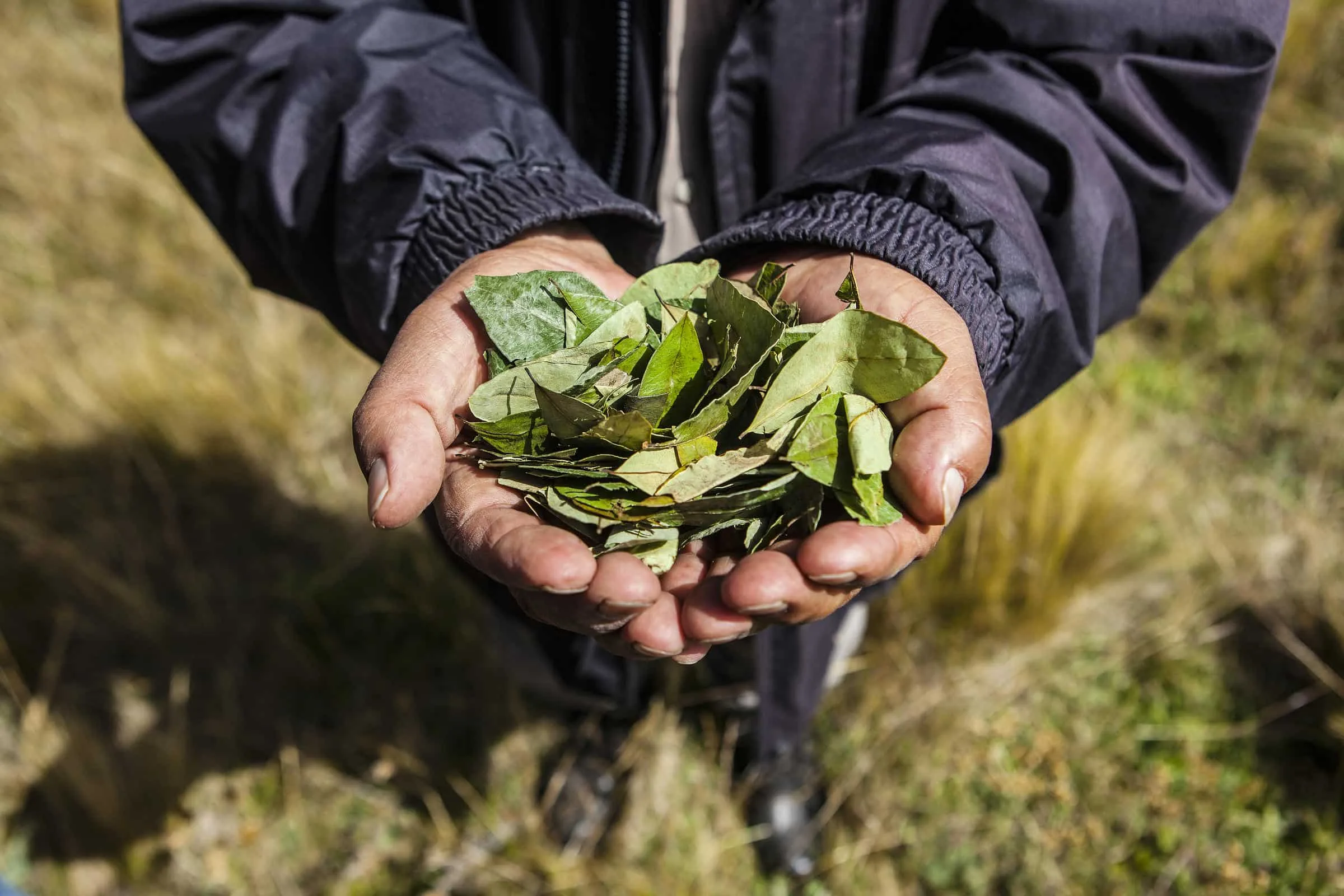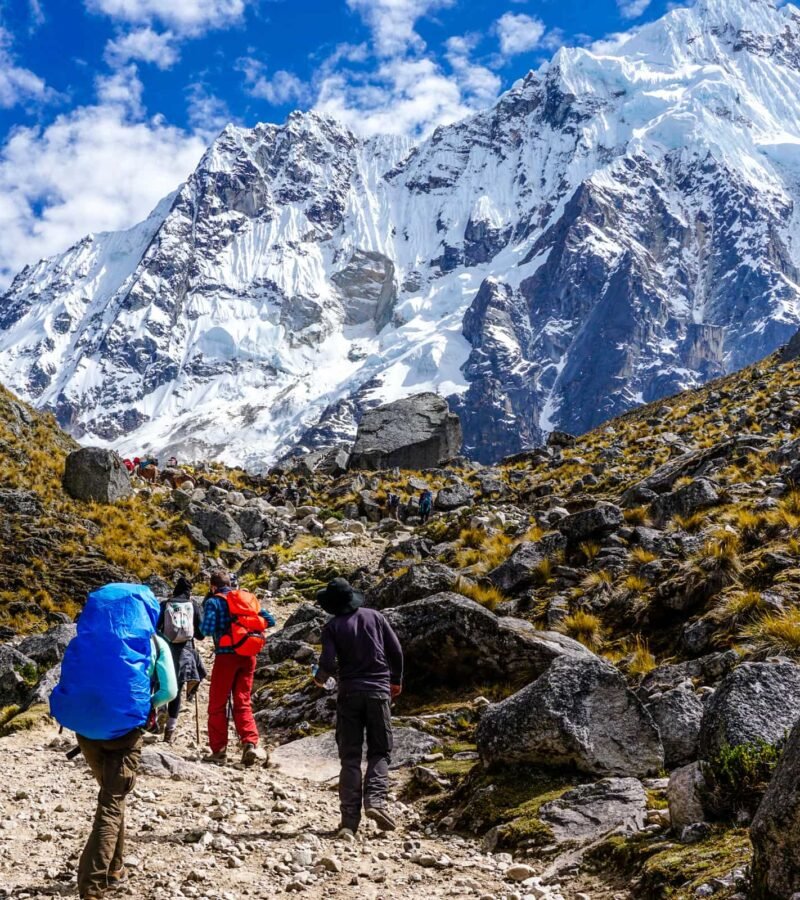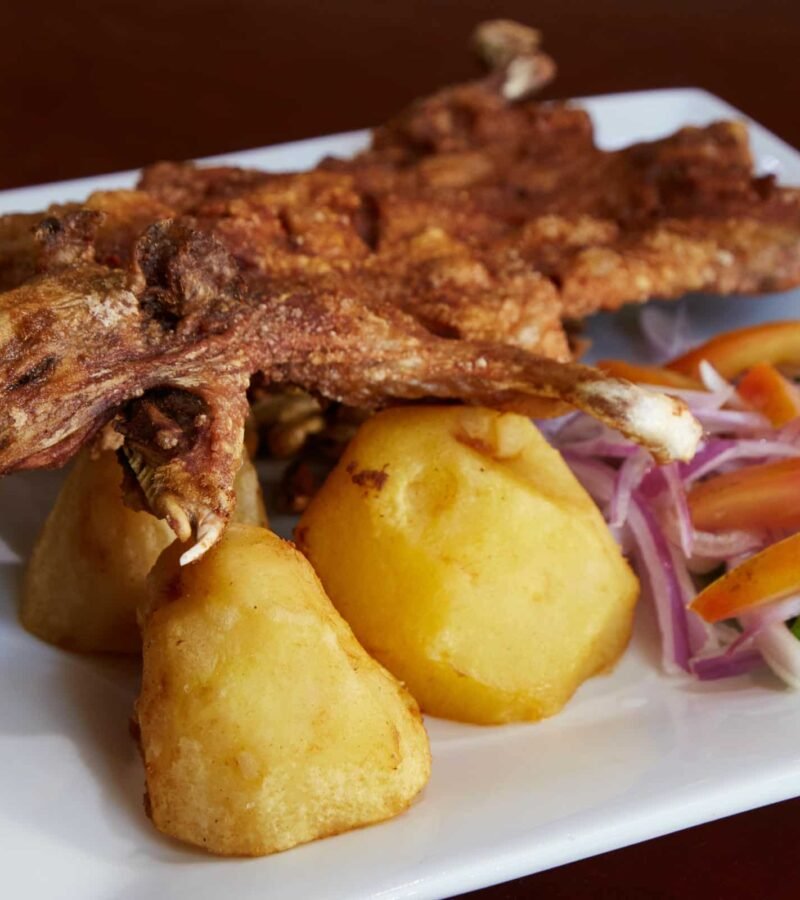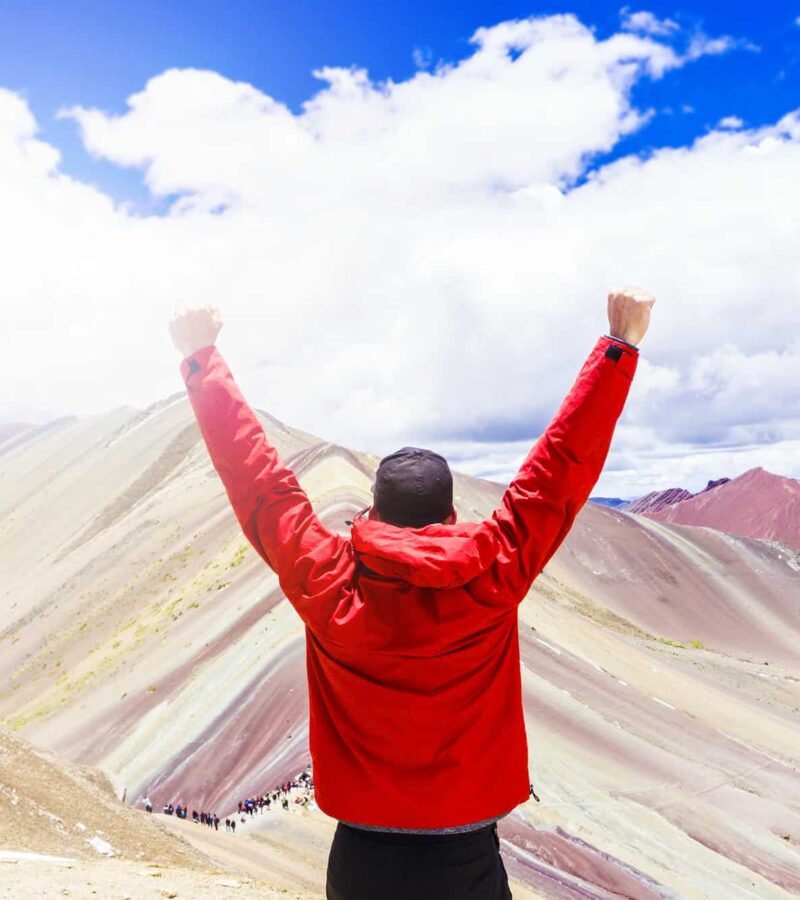Peru has one of the most diverse landscapes in the world, with about 90 different micro-climates the scenery in Peru ranges from Amazonian Jungle to desolate desert. This results in Peru having one of the widest ranges of biodiversity in the world. The many different ecosystems allow it to be home to over 1,800 species of bird, 500 kinds of mammal and 300 different reptiles.
The Incas were polytheistic, meaning they believed in many gods. One example of an Inca God would be Pachacamac, who they believed created humans, vegetation and oversaw the harvests. The Incas would often give offerings and sacrifices, including animal and human sacrifice, in order to please the gods and bring blessings upon their communities.
The Incas would mummify their dead and place them in graves standing upright with gifts to take with them to the afterlife.
There are about 10 million alpacas in the world. Three quarters of them you can find in Peru !
The tallest flower in the world grows in Peru. The Puya raimondii plant is a fascinating piece of greenery only found in the elevated peaks of the Andes. This incredible flower can grow up to five meters tall and takes around 80-150 years to bloom!
Peru produces one of the most expensive cups of coffee in the world! In order to make this special brew, coffee beans are fed to, then picked out of the excrement of a mammal called a coati. A cup of this coffee will cost anywhere between $20-$65!
Archaeologists now know how the Nazca people made the famous geoglyphs, but no one has yet figured out why. There are over 800 straight lines that stretch across the plain, some of which are over 50 km in length. There are also 300 geometric patterns including triangles, zig-zags, spirals, and arrows. Finally, there are over 70 drawings of plants and animals. Researchers have been studying them for decades, but they’re no closer to discovering why there were built. A flight over the Nazca Lines during your trip to Peru is an excellent way to appreciate these lines to come up with your own theory!
Peru is home to the special Camu-Camu fruit. Growing in the Amazon Rainforest, these berries have one of the highest levels of vitamin C found in nature. They are so sour that it is rare to see them eaten raw, more commonly they are crushed and sold as a powder that has many health benefits.
Peru is the third-largest country in South America, after Brazil and Argentina. It measures 1,285,216 square KM.
Coca leaves are great for your health. Peru’s native coca plant often gets a bad rep because it can be used to make cocaine. However, in its natural, non-concentrated form, it offers users a host of health benefits. When trekking high in the Andes Mountains, coco leaves can help calm altitude sickness. We drank coco tea when we first landed in Cusco to acclimate to the altitude and it really did help to alleviate our headaches. The leaves of the coca plant are full of Vitamin B, Vitamin C, and iron. Locals use it to relieve pain and hunger, while visitors can experience relief from altitude sickness. In the past, Incans used the plant in religious rituals and even buried coca leaves with the dead.
Almost undiscovered until 2015, Rainbow Mountain quickly became famous for its jaw-dropping and Instagram-worthy beauty. Layers of clay and sedimentary rock transform the otherwise bleak landscape into a literal rainbow of color. An expedition to this natural wonder isn’t for the faint of heart, though. At over 17,000 feet above sea level, it’s certain to be one of the highest altitudes you’ve ever trekked. Make sure you’re well-adjusted to the elevation before you sign up for a tour!
Peru gave us potatoes and tomatoes. These endemic Peruvian plant species were unknown outside of South American countries until the 1500s.Peru is home to over 3,000 varieties of potatoes in an array of sizes, colours, and textures. While potatoes immediately became popular throughout the rest of the world, tomatoes were actually feared for centuries. Europeans mistakenly believed this native Peruvian fruit was poisonous. It wasn’t until pizza was invented in Naples, Italy, in the 1880s that tomatoes became a trusted and beloved food item.
Straddling the border of Bolivia and Peru, Lake Titicaca holds the honour of the world’s highest lake. It sits at a dizzying 12,507 feet above sea level and covers an area 120 miles long and 50 miles wide. These numbers aren’t the only fascinating facts, though. In the 1970s, researchers discovered an entire city hidden beneath the waters of the lake. On the surface, the native Quechua people thrive, living on 120 man-made floating islands.
Cotahuasi Canyon in Arequipa, Peru, is the deepest canyon in the America’s. To give you an idea it is nearly twice as deep as the Grand Canyon at 3,354 metres 11,00-4 feet deep! Located near Arequipa it is second only to the Yarlung Tsangpo canyon in China.
Machu Picchu is a true Wonder of The World. You can’t hear the word “Peru” without conjuring a mental image of the lost city of Machu Picchu. A hike along the Inca Trail to this Inca citadel is a must for anyone who visits Peru. Located high in the mountains outside Cusco, Machu Picchu was hidden from outside world until 1911. Archaeologists believe the city was built at the height of the Inca Empire during the 15th and 16th centuries. Their best guess is that it served as a royal estate for Incan nobles, but no one knows for sure why it was built.
The native Quechua people have unique marriage customs. The indigenous people of Peru are known for their warm smiles and colourful clothing. You can actually tell the marital status of any Quechua woman you meet. Single women wear knitted caps, while married women wear straw hats. Even more interesting, the Quechua practice of a “trial marriage,” is a custom dating back thousands of years. Men and women are free to choose their partners, end the relationship, and remarry at any time. Any children born in the interim are viewed as belonging to the community, not a specific couple.
The elongated skulls of Paracas were discovered by archaeologists who first uncovered the strange cone-shaped skulls in the Paracas region, and were actually thought to be aliens. Although it’s a fascinating theory, science has confirmed that the skulls are human in origin. The unusual shape is due to the ancient practice of head binding. During the first few years of a baby’s life, parents would wrap the head in specific ways to alter the shape of the growing bones. This may have been done as a rite of passage or to distinguish different classes among Peruvian People.
One of the most unusual foods in Peru is deep-fried guinea pigs. Peruvian cuisine is quite diverse with a blend of seafood, meats with corn and potatoes being its base. But a delicacy in Peru is Cuy, aka guinea pig. They don’t look at these furry critters as pets but as a delectable dish!
Peru actually has the highest sand dune in the World! Cerro Blanco sand dune, located in the Sechura Desert in the south of Peru, measures 3,860 feet from the base to the summit. It towers over the quaint desert oasis town, Huacachina, and the best part of all is that you can ride dune buggies for hours and up to the top of the dunes and then strap a board to your feet and sand board down it all the way to the town below!
The Largest Flying Bird on Earth can be found in Peru. In the Colca Canyon, Arequipa you will see huge volcanoes, wild llamas grazing, and the largest bird on Earth, the Giant Andean condor. Colca Canyon is home to the largest bird in the world, standing up to 4 feet high with a wingspan of up to 14 feet! Despite weighing up to 27 pounds, the bird can fly for hours without using its wings.
The Amazon River is the longest river in the world and it starts in Peru! The Amazon river starts up high in the Peruvian Andes near Machu Picchu and ends in the Atlantic Ocean over 3,278 miles from its source. At its mouth, it is a massive 186 miles wide. It has two seasons; the wet and the dry, and water levels can fluctuate 30 feet between the two seasons.










